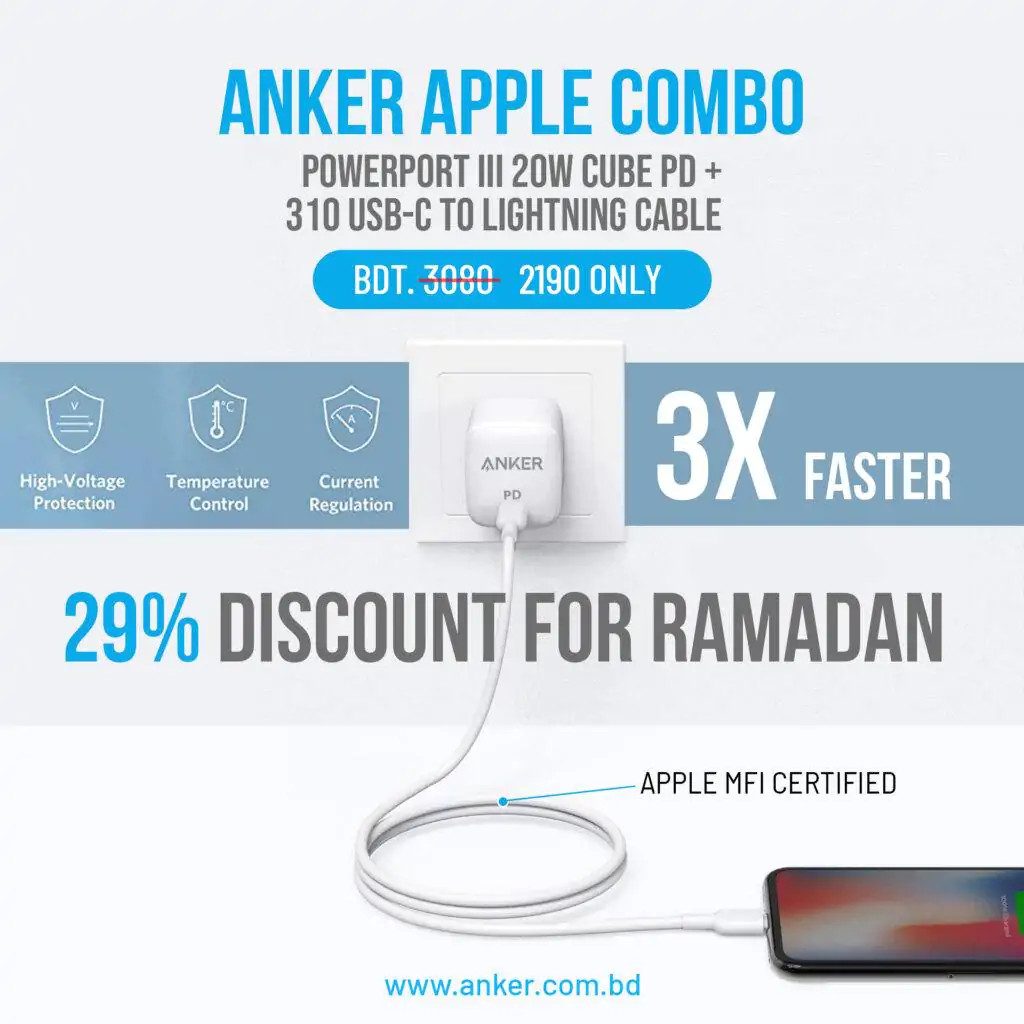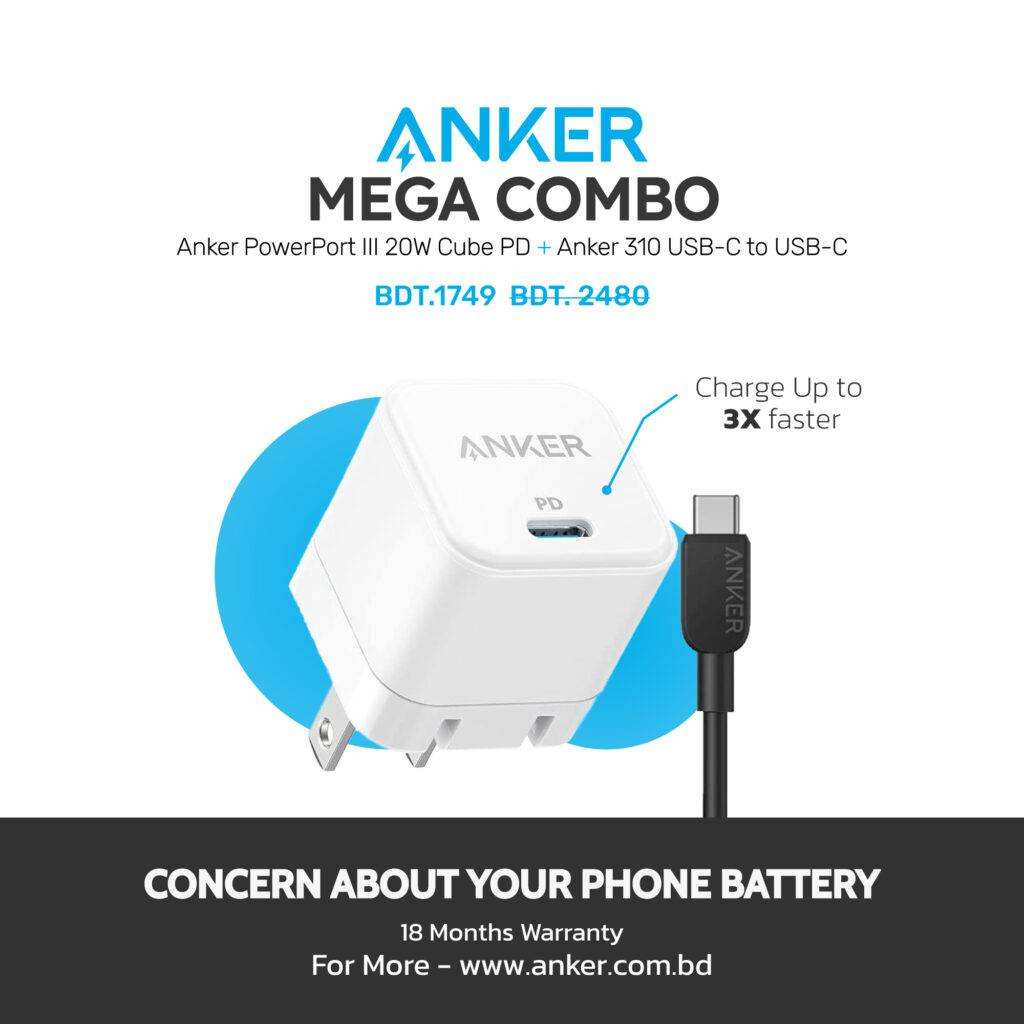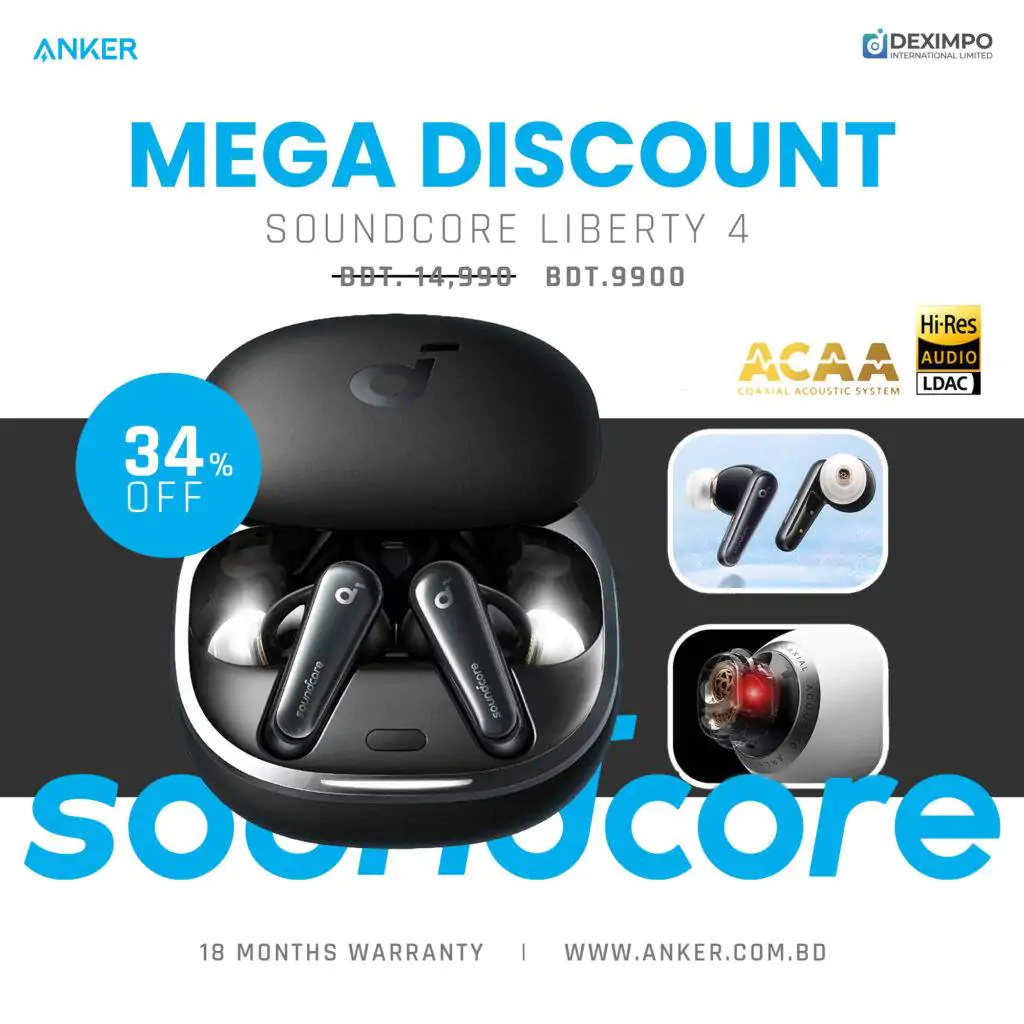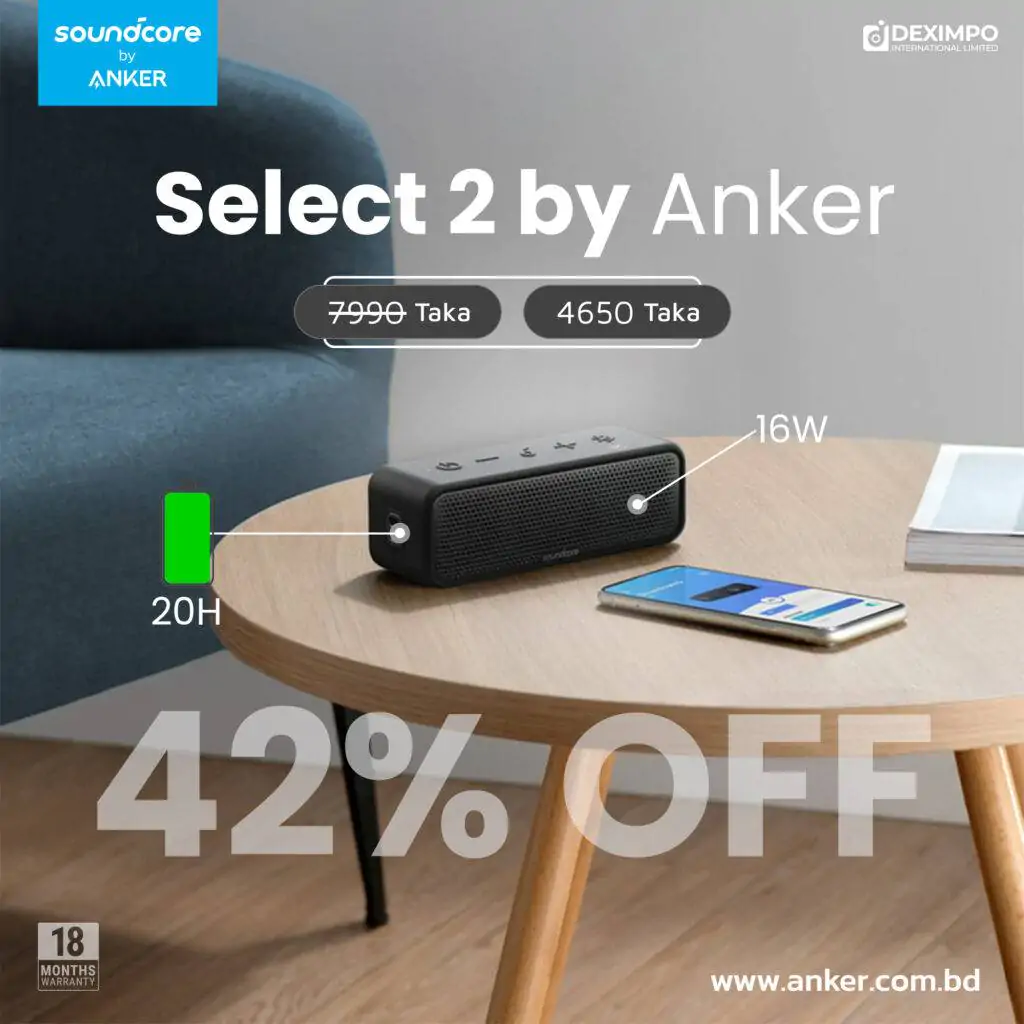Introduction of the main difference between Anker QC/PD/PPS/PIQ chargers

Anker Bangladesh PowerLine III Flow USB-C to Lightning – Purple MFI Certified Cable
What’s the main difference between Anker QC/PD/PPS/PIQ chargers? Discover the incredible world of fast-charging technologies that are transforming the way we charge our devices. From Qualcomm Quick Charge (QC) to Power Delivery (PD), Programmable Power Supply (PPS), and Anker’s PIQ series, these innovations are revolutionizing charging speeds while enhancing battery lifespan.
Qualcomm Quick Charge (QC)
Experience cutting-edge technology with Qualcomm’s Quick Charge. This feature is found in many Android devices and is designed to optimize power delivery without compromising battery longevity. With QC-enabled chargers, compatible devices can charge from 0 to 80% in just 35 minutes. Quick Charge 3.0, prevalent in Android devices with Snapdragon processors, accelerates charging speeds by up to four times compared to standard 1A charging. It also maintains backward compatibility with Quick Charge 1.0 and 2.0. Common devices that support QC include Samsung S6 to S10 series, Samsung Note 4 to Note 9, and LG G4 to LG V50 series.
Power Delivery (PD)
Power Delivery, or PD, enables rapid charging over USB connections. By facilitating communication between devices, PD negotiates power contracts to determine the optimal power draw from the charger. PD relies on USB Type-C interfaces, ensuring compatibility between the charger and the device. The USB PD Revision 3.1 update, announced in 2021, elevates power capabilities to 240W over full-featured USB Type-C cables and connectors. Earlier versions were limited to 100W via USB Type-C cables rated at 5A. Common devices that support PD include Google Pixel to Pixel 4 series, iPhone 8 or later, various iPad models, and the MacBook line. the main difference between Anker QC/PD/PPS/PIQ chargers
Programmable Power Supply (PPS)
PPS is an advanced USB-C charging technology that dynamically adjusts voltage and current in real time, minimizing conversion loss during charging. By constantly adapting to device specifications, PPS reduces heat generation, improving battery life. USB-IF integrated PPS Fast Charging into the USB PD 3.0 standard in 2017, enabling data exchange every 10 seconds for precise adjustments. Samsung Note 10 series and Samsung S20/S21 series are some of the common devices that support PPS.
Anker’s PIQ Series (Power IQ)
Unleash the power of Anker’s proprietary PIQ technology, available in various iterations like PIQ 1.0, PIQ 2.0, PIQ 3.0, and PIQ 4.0 (Power IQ 4.0). Designed to identify connected devices and deliver the fastest charging experience, Anker’s PIQ series is a game-changer. PIQ 1.0 supports a maximum of 5V/2.4A, while PIQ 2.0 is compatible with QC 3.0 and Power IQ 1.0. PIQ 3.0 takes it a step further, supporting QC 3.0, PD 3.0, and Power IQ 1.0. The latest PIQ 4.0 is compatible with QC 3.0, PD 3.0, Power IQ 1.0, and Dynamic Power Distribution, reducing overall charging time. the main difference between Anker QC/PD/PPS/PIQ chargers
Conclusion
Embrace the world of rapid charging with these cutting-edge technologies that deliver convenience and efficiency while preserving your device’s battery health. Experience fast charging like never before and stay powered up throughout the day. Upgrade to the latest charging technologies and unlock the true potential of your devices.
Pros of Anker PIQ Chargers:
- Wide Compatibility: PIQ chargers are suitable for various devices, making them a convenient choice for households with multiple gadgets.
- Adaptive Charging: The device identification feature ensures that your device receives the right amount of power, optimizing charging speed and efficiency.
Cons of Anker PIQ Chargers:
- Not an Industry Standard: PIQ is unique to Anker, so it may not be as widely recognized or adopted as industry-standard technologies like QC and PD.
Now that we’ve explored the individual characteristics of Anker QC, PD, PPS, and PIQ chargers, let’s summarize the differences and consider which one might be the best fit for your specific needs:
Choosing the Right Charger for Your Needs:
- If you value speedy charging above all else and own a Qualcomm Snapdragon-powered device, an Anker QC charger is an excellent choice. It will provide you with the fastest charging speeds available.
- If you have a variety of devices from different brands and want a charger that can handle them all, an Anker PD charger is a versatile option. PD chargers offer compatibility with a broad range of devices, and USB-C compatibility is a bonus.
- For those with modern devices that require precise power control, such as some smartphones and laptops, Anker PPS chargers are ideal. PPS technology ensures that your device gets the right amount of power without compromising battery health.
- If you want a charger that adapts to a variety of devices and don’t mind proprietary technology, Anker PIQ chargers with PowerIQ technology offer broad compatibility and efficient charging.
It’s essential to consider your specific device’s compatibility and your charging needs when choosing a charger. Anker’s diverse lineup ensures that you can find the right charger to keep your devices powered up and connected in today’s digital age. Whether you prioritize speed, versatility, or precise charging control, Anker has a charger to meet your requirements and enhance your overall charging experience.






